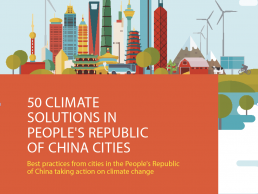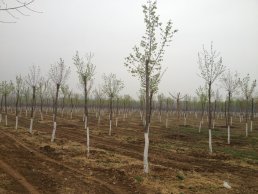First appeared in

Asian Development Bank
50 climate solutions from cities in the People's Republic of China
In the outskirts of Beijing, communities are finding new value in old farmland through an afforestation project that sequesters carbon and brings new revenue streams to local residents.
As the country’s capital city, Beijing famously struggles with air pollution in its grey landscape. To combat this, the city government is encouraging afforestation as a method to renew the environment in the periphery of the city. One branch of this strategy is taking place in Fangshan district, where old maize and wheat farmland is being converted into forest. The city estimates that the 307 ha of afforested land in this district will sequester 2,947 tons of carbon each year, with further avoided emissions from reduced nitrogen fertilization. Through participation in the national carbon market, each ha of afforested land generates government subsidies worth CNY22,500.
307
HA OF LAND HAVE BEEN AFFORESTED UNDER THE PROGRAM
The project is also helping local residents to see the wood from the trees with new revenue streams. As well as employing over 110 people in the management of the forest, the trees are producing plums, peaches and other fruits being directly sold to Beijing residents. The project is also bringing in tourists from outside the area who can enjoy the new green surroundings.

The newly planted trees in Fangshan district are improving the quality of life and air in the region.
The Challenge
Research suggests that carbon sequestration will have to play a significant role in future climate change strategies. The PRC, as well as being the world’s leading carbon emitter, has a history of problems with deforestation and soil erosion, but is now turning that around with afforestation and carbon sequestration projects such as this.
Co-Benefits
Economic For each ha of land afforested, a government subsidy of CNY22,500 is awarded, with other new revenue streams added for local farmers such as fruit production.
Environment Afforestation of the 307 ha has halved soil erosion, reduced ammonia emissions, and once fully developed will sequester 2,947 tons of CO2 each year, in addition to reducing emissions from nitrogen fertilization.
Health Trees are effective air filters, removing particulate matter that can lead to respiratory diseases as well as having proven benefits for improving mental wellbeing.

